We want to review the history of our faith in the light of figures from the New Testament where, in Christ, Revelation reaches its fulfillment and fullness: In many and various ways God spoke of old to our fathers by the prophets, but in these last days he has spoken to us by [his] Son.[1]
Perfect icon of the faith
When the fullness of time arrived, God sent forth his Son, born of woman, born under the law.[2] All of the expectant waiting for the Savior’s coming in the Old Testament was concentrated in our Lady’s faith: “In Mary . . . is fulfilled the long history of faith of the Old Testament, with its account of so many faithful women, beginning with Sarah: women who, alongside the patriarchs, were those in whom God’s promise was fulfilled and new life flowered.”[3] Like Abraham, “our father in faith,”[4] who left his homeland trusting in God’s promise, Mary abandoned herself with complete trust in the Angel’s announcement, thus becoming a model and mother for believers. The Virgin Mary, “perfect icon of the faith,”[5] believed that nothing is impossible for God, and thus made it possible for the Word to come to dwell among mankind.
Our Mother is a model of faith. “By faith, Mary accepted the Angel’s word and believed the message that she was to become the Mother of God in the obedience of her devotion (cf. Lk 1:38). Visiting Elizabeth, she raised her hymn of praise to the Most High for the marvels he worked in those who trust him (cf. Lk 1:46-55). With joy and trepidation she gave birth to her only son, keeping her virginity intact (cf. Lk 2:6-7). Trusting in Joseph, her husband, she took Jesus to Egypt to save him from Herod’s persecution (cf. Mt 2:13-15). With the same faith, she followed the Lord in his preaching and remained with him all the way to Golgotha (cf. Jn 19:25-27). By faith, Mary tasted the fruits of Jesus’ resurrection, and treasuring every memory in her heart (cf. Lk 2:19, 51), she passed them on to the Twelve assembled with her in the Upper Room to receive the Holy Spirit (cf. Acts 1:14; 2:1-4).”[6]
Our Lady lived out her faith amid a fully human life, that of an ordinary woman. “[God] did not spare her pain, exhaustion in her work or trials of her faith. A village woman one day broke into praise for Jesus exclaiming: Blessed is the womb that bore you and the breasts that nourished you. Jesus said in reply: Rather, blessed are they who hear the word of God and keep it (Lk 11:27-28). It was a compliment to his Mother on her fiat (Lk I:38), her ‘be it done.’ She lived it sincerely, unstintingly, fulfilling its every consequence, but never amid fanfare, rather in the hidden and silent sacrifice of each day.”[7]
Our Lady “lived entirely from and in her relationship with the Lord; she was disposed to listen, alert to recognizing the signs of God in the journey of his people; she was integrated into a history of faith and hope in God’s promises with which the fabric of her life was woven.”[8]
Teacher of faith
By faith, Mary penetrated into the Mystery of God One and Three in a way granted to no other creature. And as “mother of our faith,”[9] she has made us sharers in that knowledge. “We can never hope to fathom this inexpressible mystery; nor will we ever be able to give sufficient thanks to our Mother for bringing us into such intimacy with the Blessed Trinity.”[10]
Our Lady is Teacher of faith. Every aspect of faith in Christian life finds its prototype in Mary: being faithful to God and viewing the circumstances of ordinary life in the light of faith, even in moments of obscurity. Our Mother teaches us to be totally open to the divine will “even though it is mysterious, and often does not correspond with their own wishes, and is a sword that pierces their soul, as the elderly Simeon would say prophetically to Mary when Jesus was presented in the Temple (cf. Lk 2:35).”[11]Her complete trust in God’s faithfulness and in his promises never wavers, even when the Lord’s words were difficult or apparently impossible to accept.
Therefore, “if our faith is weak, we should turn to Mary.”[12] Amid the darkness of the Cross, our Lady’s faith and docility yields an unexpected fruit. “In the person of John, Christ is entrusting all men to his Mother, and especially his disciples: those who were to believe in him.”[13] Mary’s motherhood extends to Christ’s whole Mystical Body. Jesus gives us his Mother as our mother; he places us under her care, and offers us her intercession. Therefore the Church constantly invites the faithful to turn with particular devotion to Mary.
Our weakness is not an obstacle to grace. God takes it into account; that’s why he has given us a mother. “In the struggle which the disciples must confront—all of us, all the disciples of Jesus, we must face this struggle—Mary does not leave them alone: the Mother of Christ and of the Church is always with us. She walks with us always, she is with us . . . Mary accompanies us, struggles with us, sustains Christians in their fight against the forces of evil.”[14]
In the school of faith, our Lady is the best teacher, for she always had an attitude of trust, of openness, of supernatural outlook, no matter what happened around her.Mary kept all these things, pondering them in her heart.[15] “Let us try to imitate her, talking to our Lord, conversing like two people in love about everything that happens to us, even the most insignificant incidents. Nor should we forget that we have to weigh them, consider their value, and see them with the eyes of faith, in order to discover the Will of God.”[16]
Mary’s path of faith, although certainly different in many ways, is also similar to that of each one of us. Moments of bright light alternate with moments of darkness with respect to God’s will. When they found Jesus in the Temple, Mary and Joseph did not understand the saying which he spoke to them.[17] If, like our Lady, we welcome the gift of faith and place all our trust in God, we will confront each situation in our lifecum gaudio et pace—with the joy and peace of God’s children.
Imitating Mary’s faith
In our Lady “the faith journey of the Old Testament was thus taken up into the following of Christ, transformed by him and entering into the gaze of the incarnate Son of God.”[18] In the Annunciation, Mary’s response shows us her faith as a commitment, a self-giving, a vocation: Behold, I am the handmaid of the Lord; let it be to me according to your word.[19] Like Mary Most Holy, Christians should live “with their eyes on God, repeating her words fiat mihi secundum verbum tuum . . . On these words depends the faithfulness to one’s personal vocation—which is always unique and non‑transferable in each case—that will make us all cooperators in the work of salvation that God carries out in us and in the entire world.”[20]
But how can we always respond with a faith as firm as Mary’s, never losing trust in God? By imitating her. When confronted by God’s presence, Mary refuses to give in to fear or mistrust. Rather she “enters into a deep conversation with the Word of God that has been announced to her; she does not consider it superficially but meditates on it, lets it sink into her mind and her heart so as to understand what the Lord wants of her, the meaning of the announcement.”[21] Like our Lady, let us try to recognize God’s will in all that happens in our lives. Mary reflects deeply and ponders on all the events in her life from the perspective only faith can give. With our Mother’s help, let us strive to make this our response as well.
By contemplating Mary’s life and imitating her, letting her lead us by the hand, we will be helped to stir up in those around us, in our relatives and friends, a greater openness to the light of faith. We will do so by the example of our consistent life, by our personal conversations, of friendship and trust, that include the necessary doctrine, to help facilitate a personal encounter with Christ through the sacraments and practices of piety, both when working and when resting. “If we become identified with Mary and imitate her virtues, we will be able to bring Christ to life, through grace, in the souls of many who will in turn become identified with him through the action of the Holy Spirit. If we imitate Mary, we will share in some way in her spiritual motherhood. And all this silently, like our Lady; without being noticed, almost without words, through the true and genuine witness of our lives as Christians, and the generosity of ceaselessly repeating her fiat, which we renew as an intimate link between ourselves and God.”[22]
Let us turn to Mary and ask her to help us live by faith and to recognize Jesus in our lives. We need a faith that assures us that nothing is comparable to the Love of God in which we have been made sharers; faith that nothing is impossible for those who work for and with Christ in his Church; faith that all men and women can convert to God; faith that despite our own wretchedness and falls we can be made whole again with God’s help and that of those around us; faith in the means of holiness that God has given his Church, in the supernatural value of work and of little things; faith that we can redirect this world to God if we always hold onto his hand. In short, faith that God puts each of us in the best circumstances, whether of health or sickness, of working environment, etc., so that we can become saints, if we respond through our daily struggle.
“Christ lays down one condition: we must live by faith; then we will be able to move mountains. And so many things need moving… in the world, but, first of all, in our own hearts. So many obstacles placed in the way of grace! We have to have faith, therefore: faith and works, faith and sacrifice, faith and humility. For faith makes us all-powerful: If you will only believe, every gift you ask for in your prayer will be granted (Mt 21:22).”[23]
Spurred by a strong faith, let us tell Jesus: “’Lord, I do believe, but help me to believe more and better!’ Let us address this same plea to our Lady, Mother of God and our Mother, and Teacher of faith: Blessed art thou for thy believing; the message that was brought to thee from the Lord shall have fulfillment (Lk 1:45).[24] “Mother, help our faith!”[25]
[1] Heb 1:1-2.
[2] Gal 4:4.
[3] Pope Francis, Encyclical Lumen Fidei, 29 June 2013, no. 58.
[4] Roman Missal, First Eucharistic prayer.
[5] Pope Francis, Encyclical Lumen Fidei, 29 June 2013, no. 58.
[6] Benedict XVI, Motu Proprio Porta Fidei, 11 October 2011, no. 13.
[7] Saint Josemaria, Christ Is Passing By, no. 172.
[8] Benedict XVI, General Audience, 19 December 2012.
[9] Pope Francis, Encyclical Lumen Fidei, 29 June 2013, no. 60.
[10] Saint Josemaria, Friends of God, no. 276.
[11] Benedict XVI, General audience, 19 December 2012.
[12] Saint Josemaria, Friends of God, no. 285.
[13] Ibid., no. 288.
[14] Pope Francis, Homily, 15 August 2013.
[15] Lk 2:19.
[16] Saint Josemaria, Friends of God, no. 285.
[17] Lk 2:50.
[18] Pope Francis, Encyclical Lumen Fidei, 29 June 2013, no. 58.
[19] Lk 1:38.
[20] Saint Josemaria, Conversations, no. 112.
[21] Benedict XVI, General audience, 19 December 2012.
[22] Saint Josemaria, Friends of God, no. 281.
[23] Ibid., no. 203.
[24] Ibid., no. 204.
[25] Pope Francis, Encyclical Lumen Fidei, 29 June 2013, no. 60.

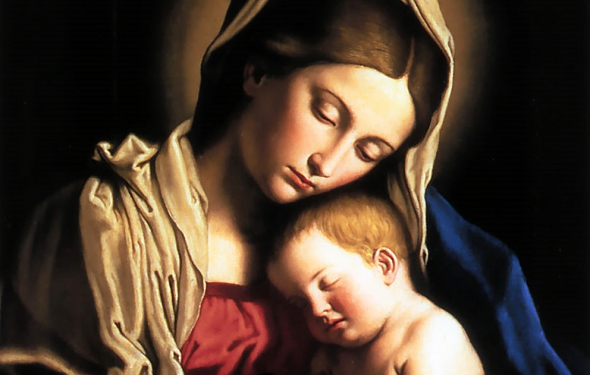

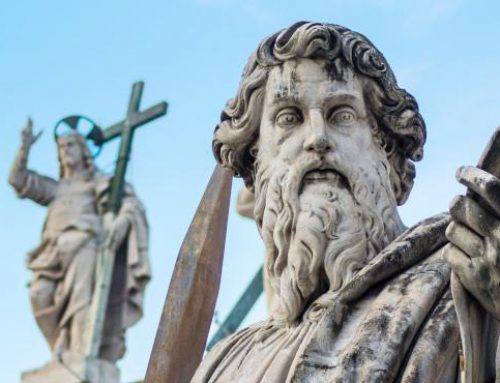
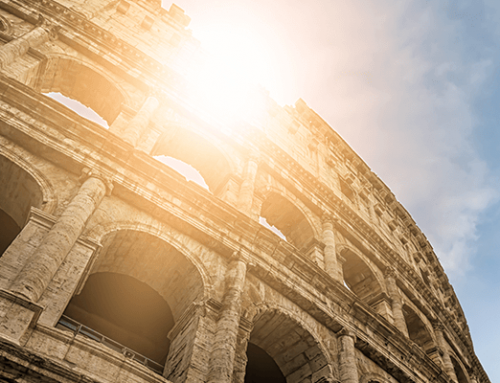
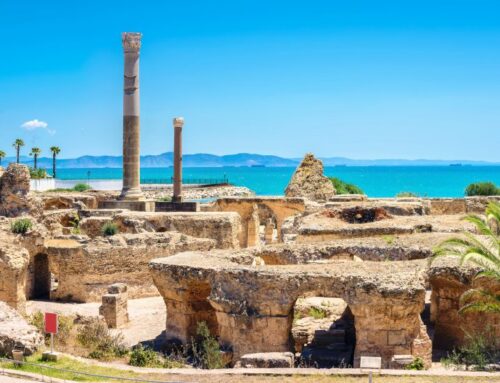
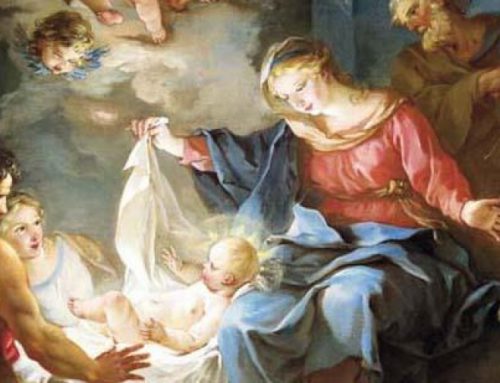

Leave A Comment
You must be logged in to post a comment.